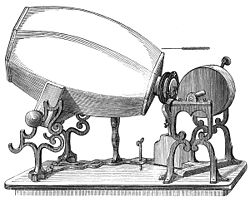History of Audio
Recording

The first audio recording devices created were the phonautograph, created by Edouard Léon Scott in 1856. Next was the Cylinder recording and player developed by Thomas Edison in 1877, and then the Gramophone created by Emile Berliner in 1888. The year after Edison created his cylinder recording, he had a maximum of 10 grooves per inch on the cylinder. That number was up to 100 grooves per inch in 1903, and jumped again in 1948 to 1000 grooves per inch when Columbia released their microgroove discs. In the 1970s and 80s, cassettes hit it big as the popular way with which to keep your music. The 1990s gave way to the compact disc, which then eventually lead to the rise of all digital with mp3 players in the 2000s.

The first audio recording device, the Phonautograph
autograph https://commons.wikimedia.org/w/index.php?curid=8853164